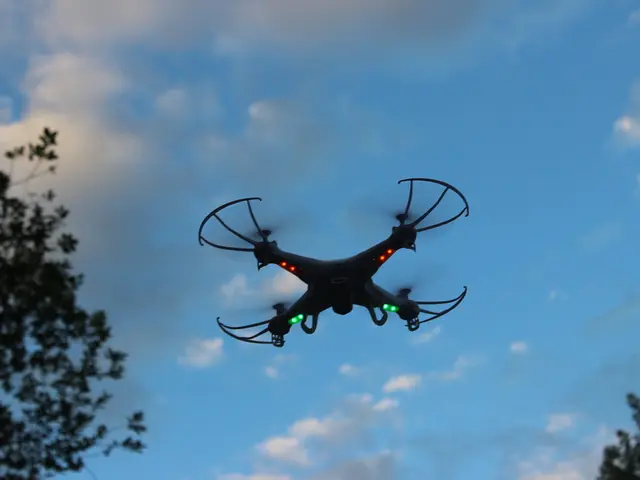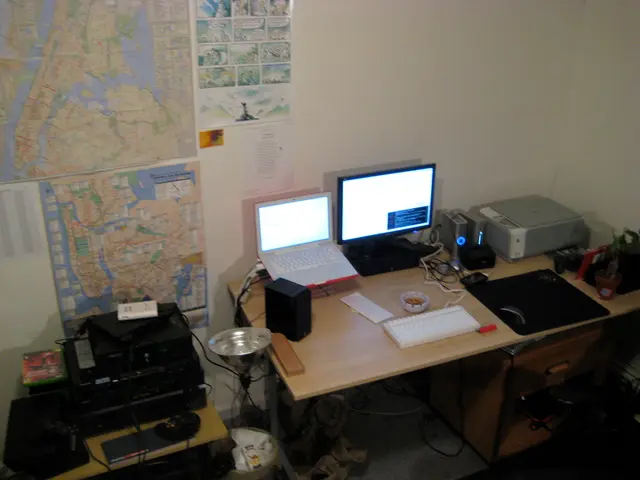Semiconductor firms potentially face greater challenges from software issues compared to hardware.
In the rapidly evolving world of artificial intelligence (AI), Chinese competitors are making significant strides in the development of AI software platforms. This comes as they aim to challenge industry leader Nvidia in the highly integrated semiconductor industry, where software often plays a more significant role than hardware.
Four "AI dragons" emerged in China in 2015 to lead the development of the AI industry. Among them, Biren Technology, Cambricon, and Houmo.ai are making headlines with their innovative software platforms.
Biren has developed the BIRENSUPA software platform, which includes a hardware abstraction layer, a programming model, the BRCC compiler, deep learning and general computing acceleration libraries, toolchains, support for mainstream deep learning frameworks, self-developed inference acceleration engines, and application SDKs for various scenarios. The platform has shown promising results in practical application migrations and mainstream open-source large models.
Cambricon, focusing on cloud and automotive AI chips, has launched a foundational software platform. Meanwhile, Houmo.ai, specializing in integrated smart driving chips, has introduced the Houmo Dadao software platform.
The current landscape of AI software platform development in China is competitive, with companies like DeepSeek working with Huawei's Ascend chips, and Alibaba developing a new AI chip aiming to match Nvidia's capabilities. Cambricon, another Chinese chip manufacturer, is releasing new AI chips close to Nvidia’s performance.
The first-mover advantage of CUDA, a popular AI computing platform, has narrowed due to the rapid convergence in the AI industry. This presents an opportunity for Chinese AI chip manufacturers to quickly get started with tuning and adapting their large models. If they can provide easy-to-use and low-cost migration tools, offer comprehensive model adaptation capabilities, and have mature cluster deployment experience, rapid implementation of large models becomes feasible.
The emergence of large language models (LLMs) has become the frontier technology pursued worldwide, with Biren partnering with Chinese computing power optimization players like Infinigence to drive the localization of AI computing in an efficient manner. Biren has also partnered with framework developers like PaddlePaddle to meet enterprise users' development needs in line with international standards, and specifically tailor solutions to be compatible with the domestic environment.
However, Chinese AI chip manufacturers face challenges in obtaining the most cutting-edge GPU chips due to Nvidia's strict prohibition, US chip bans, and global shortage of computing power. This creates a first pain point to resolve: figuring out how to migrate existing large models to new computing platforms.
The technological foundation of large language models (LLMs) is the Transformer network, initially having three different paths: BERT, T5, and GPT, but GPT has become the absolute mainstream in the global AI industry. The first-mover advantage of CUDA has narrowed due to the rapid convergence in the AI industry, making it advantageous for Chinese AI chip manufacturers to quickly get started with tuning and adapting their large models.
In 2022, Nvidia was required to stop supplying high-end GPU chips to the Chinese market, effectively blocking China's GPU chip purchase channels. This has pushed Chinese AI chip players to strive to build their own hardware and software ecosystems to catch up to global giants like Nvidia.
In conclusion, the AI semiconductor industry is witnessing a significant shift as Chinese competitors rise to challenge Nvidia in software development. With the first-mover advantage of CUDA narrowing, breakthroughs can be achieved through concerted efforts across industry, academia, and research. The consensus focus of all major AI chip companies is on software, and it is here where the battle for dominance in the AI industry will be fought.
Read also:
- Understanding Hemorrhagic Gastroenteritis: Key Facts
- Trump's Policies: Tariffs, AI, Surveillance, and Possible Martial Law
- Expanded Community Health Involvement by CK Birla Hospitals, Jaipur, Maintained Through Consistent Outreach Programs Across Rajasthan
- Abdominal Fat Accumulation: Causes and Strategies for Reduction







